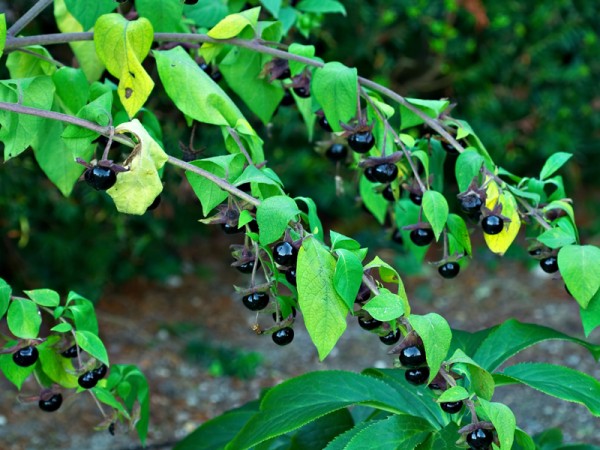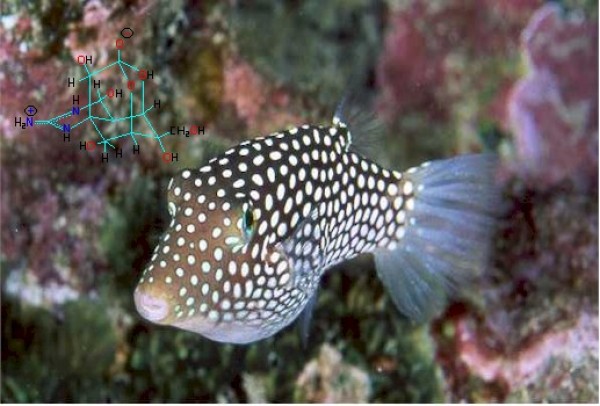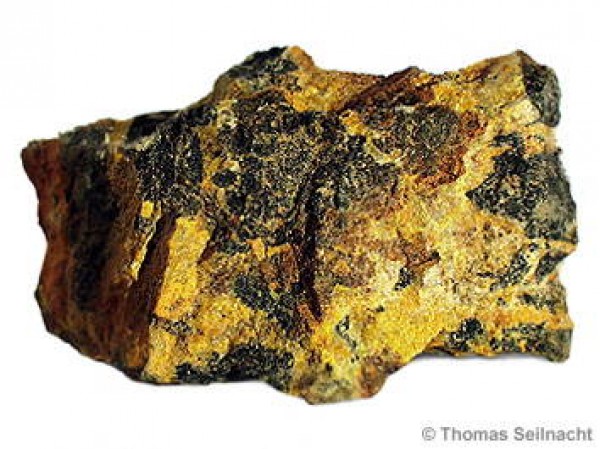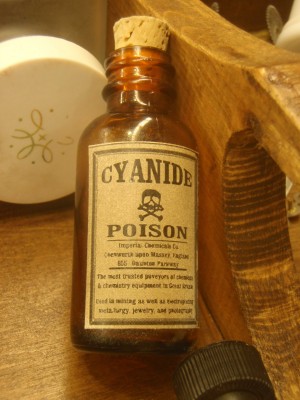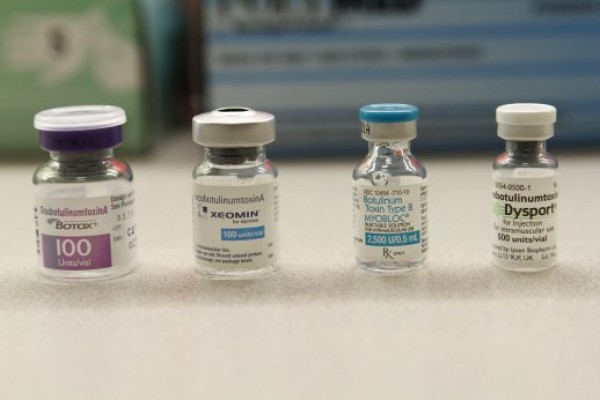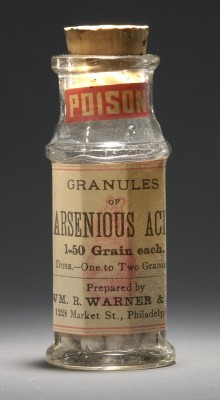 History
History  History
History  Creepy
Creepy 10 Unsettling Ghost Stories to Tell This Halloween
 Crime
Crime 10 Truly Evil People Who Used Halloween as the Perfect Cover
 Movies and TV
Movies and TV 10 Wildly Different Movie Takes on Nuclear War
 Creepy
Creepy 10 Places Where Folklore Is Alive and Well
 History
History 10 Events That Unexpectedly Changed American Life
 Pop Culture
Pop Culture 10 Cases of Grabbing Defeat from the Jaws of Victory
 History
History 10 Common Misconceptions About the Renaissance
 Weird Stuff
Weird Stuff 10 Crazy Things Resulting from Hidden Contract Provisions
 Facts
Facts 10 Unusual Facts About Calories
 History
History 10 Not-so-Spooky Events That Also Happened on October 31
 Creepy
Creepy 10 Unsettling Ghost Stories to Tell This Halloween
 Crime
Crime 10 Truly Evil People Who Used Halloween as the Perfect Cover
Who's Behind Listverse?

Jamie Frater
Head Editor
Jamie founded Listverse due to an insatiable desire to share fascinating, obscure, and bizarre facts. He has been a guest speaker on numerous national radio and television stations and is a five time published author.
More About Us Movies and TV
Movies and TV 10 Wildly Different Movie Takes on Nuclear War
 Creepy
Creepy 10 Places Where Folklore Is Alive and Well
 History
History 10 Events That Unexpectedly Changed American Life
 Pop Culture
Pop Culture 10 Cases of Grabbing Defeat from the Jaws of Victory
 History
History 10 Common Misconceptions About the Renaissance
 Weird Stuff
Weird Stuff 10 Crazy Things Resulting from Hidden Contract Provisions
 Facts
Facts 10 Unusual Facts About Calories
10 Poisons Used To Kill People
Poison is definitely among fiction’s greatest weapons. Hercule Poirot and Sherlock Holmes seem to have developed the audience’s taste for untraceable, fast-acting poisons used to kill. However, a murder mystery is one thing, but when the story becomes a reality, you have got yourself a real killer! Here is a list of the most famous poisons used to kill people throughout history.
SEE ALSO: 10 Foods We Eat That May Lead To Poisoning Or Death
10 Hemlock
Hemlock or Conium is a highly toxic flowering plant indigenous to Europe and South Africa. It was a popular one with the ancient Greeks, who used it to kill off their prisoners. For an adult, the ingestion of 100mg of conium or about 8 leaves of the plant is fatal. Death comes in the form of paralysis–your mind is wide awake, but your body doesn’t respond, and eventually, the respiratory system shuts down. Probably the most famous hemlock poisoning is that of the Greek philosopher Socrates. Condemned to death for impiety in 399 BC, he was given a very concentrated infusion of hemlock.
Impress your friends (and get some strange looks) with your in-depth knowledge of poisons! Buy Poisons: From Hemlock to Botox and the Killer Bean of Calabar at Amazon.com!
9 Aconite
Aconite comes from the plant monkshood. Also known as wolfsbane, aconite leaves only one post-mortem sign, that of asphyxia, as it causes arrhythmic heart function, which leads to suffocation. Poisoning can occur even after touching the plant’s leaves without wearing gloves as it is very rapidly and easily absorbed. Because of its untraceable nature, it has been a popular poison with the “get away with murder” crowd. Reportedly, it has a particularly famous casualty. The emperor Claudius is said to have been poisoned by his wife, Agrippina, using aconite in a plate of mushrooms.
8 Belladonna
This was a favorite of the ladies! The name of this plant is derived from Italian and means beautiful woman. That’s because belladonna was used in the middle-ages for cosmetic purposes–diluted eye-drops dilated the pupils, making the women more seductive (or so they thought). If gently rubbed on their checks, it would create a reddish color, which today would be known as blush! This plant seems innocent enough, right? Well, actually, if ingested, a single leaf is lethal, and that’s why it was used to make poison-tipped arrows. The berries of this plant are the most dangerous–consumption of ten of the attractive-looking berries is fatal.
7 Amanita phalloides
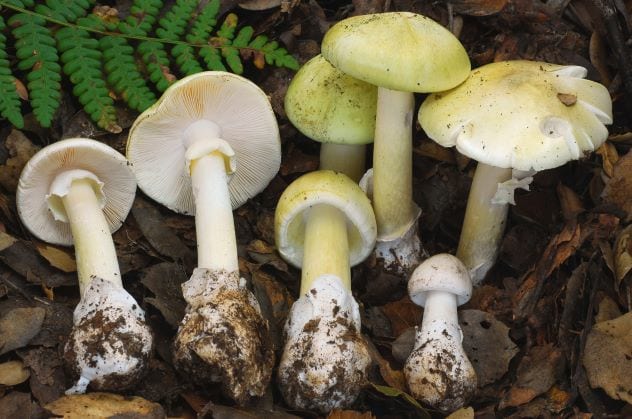
The death cap mushroom, Amanita phalloides, is a deadly fungus commonly mistaken for edible mushrooms. All parts of the mushroom are poisonous, and ingesting even just a few pieces can be fatal, even though they are reported to taste quite pleasant. As the poisons are very stable, they cannot be removed through cooking, soaking, or drying. There are two main families of toxins in these ‘shrooms–the amatoxins and the phallotoxins. In the body, the toxins affect the liver and kidney, even if someone has recovered from the initial symptoms of nausea, vomiting, and diarrhea. In 1534, Pope Clement VII was said to have succumbed to the poison after accidentally ingesting the mushroom. It is also possible the Holy Roman Emporer Charles VI died in the 1700s as a result of the Amanita phalloides. Though historians have questioned some of these deaths by black cap mushrooms, one thing is certain–these are not the magic mushrooms you should be eating.
6 Tetrodotoxin
Tetrodotoxin is found in two marine creatures: the blue-ringed octopus and the pufferfish. However, the octopus is the most dangerous because it purposely injects its venom, killing its victim in minutes. It carries enough venom to kill 26 human adults within minutes, and the bites are often painless, so many victims realize they have been bitten only when paralysis sets in. On the other hand, the pufferfish is only lethal if you want to eat it, but if it is well prepared, meaning the venom is taken out, the only thing left is the adrenaline of eating something which could kill you.
5 Polonium
Polonium is a radioactive poison, a slow killer with no cure. One gram of vaporized polonium can kill about 1.5 million people in just a couple of months. The most famous case of polonium poisoning is that of an ex-Russian spy, Alexander Litvinenko. Polonium was found in his teacup–a dose 200 times higher than the median lethal dose in case of ingestion. He died within three weeks.
4 Mercury
There are three forms of mercury which are extremely dangerous. Elemental mercury is the one you can find in glass thermometers; it’s not harmful if touched but lethal if inhaled. Inorganic mercury is used to make batteries and is deadly only when ingested. And finally, organic mercury is found in fish, such as tuna and swordfish (consumption should be limited to 170g per week) but can be potentially deadly over long periods of time. A famous death caused by mercury is Amadeus Mozart, who was given mercury pills to treat his syphilis.
3 Cyanide
Now here’s one right out of an Agatha Christie novel. Cyanide seems to be extremely popular (spies use cyanide pills to kill themselves when caught), and there are plenty of reasons for this. First, it is found naturally in various substances like almonds, apple seeds, apricot kernels, tobacco smoke, insecticides, pesticides, and the list goes on. Murder, in this case, can be blamed on a household accident, such as the ingestion of a pesticide. A fatal dose of cyanide for humans is 1.5 mg per kilogram of body weight. Second, it’s a rapid killer; death occurs within 1 to 15 minutes, depending on the dose. In its gaseous form – hydrogen cyanide – it was the agent used by Nazi Germany for mass murders in the gas chambers during the Holocaust.
Hey, we trust you. Buy a bottle of Cyanide at Amazon.com!
2 Botulinum Toxin
If you’re watching Sherlock Holmes, then you’ll know about this one. The Botulinum toxin causes Botulism, a fatal condition if not treated immediately. It involves muscle paralysis, eventually leading to paralysis of the respiratory system and, consequently, death. The bacteria enter the body through open wounds or by ingesting contaminated food. By the way, botulinum toxin is the same stuff used for Botox injections!
1 Arsenic
Arsenic has been called “The King of Poisons,” for its discreetness and potency. It was virtually undetectable, so it was often used either as a murder weapon or as a mystery story element. But that’s until the Marsh test came and signaled the presence of this poison in water, food, and the like. However, this king of poisons has taken many famous lives: Napoleon Bonaparte, George III of England, and Simon Bolivar, to name a few. On another note, arsenic, like belladonna, was used by the Victorians for cosmetic reasons. A couple of drops of the stuff made a woman’s complexion white and pale. Just perfect!


